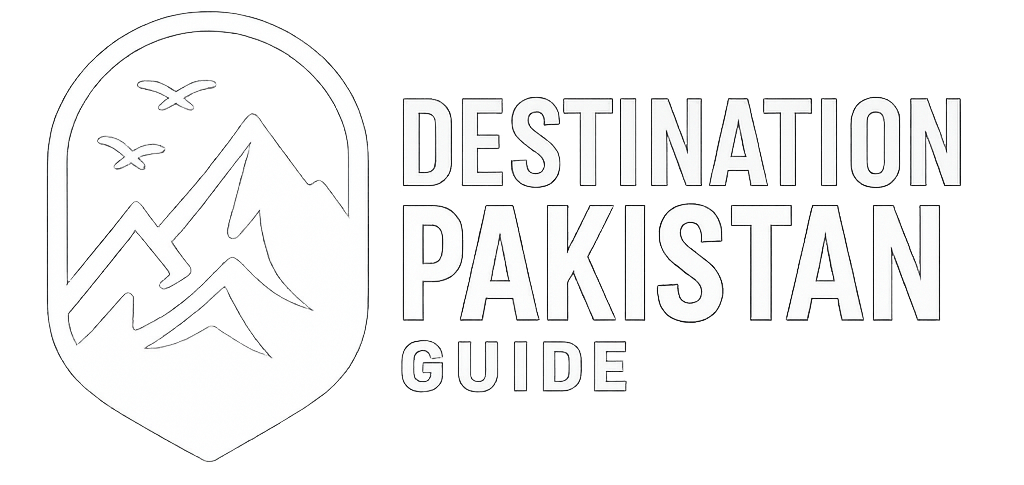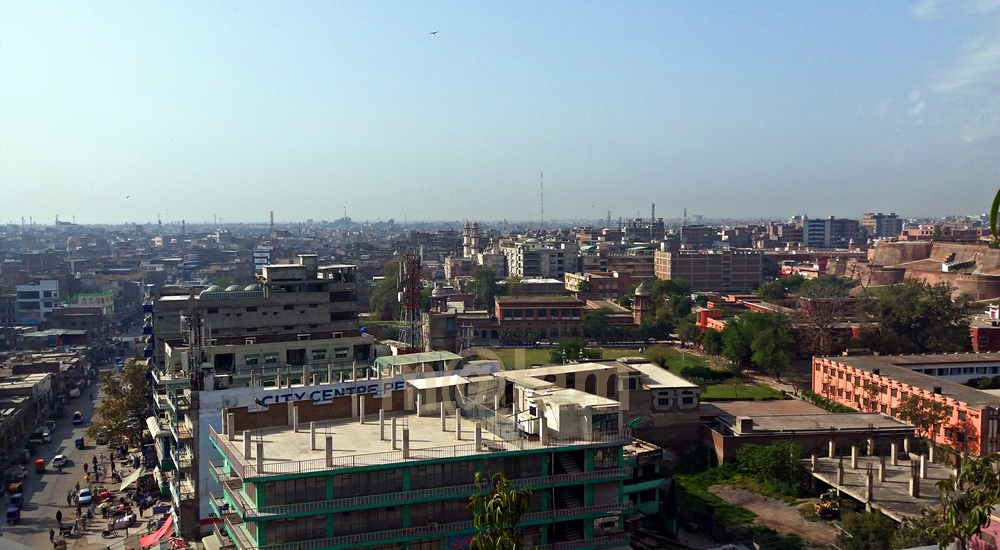Khyber Pakhtunkhwa Province of Pakistan
The Khyber Pakhtunkhwa Province is the smallest of the four administrative provinces of Pakistan. It is located in the northwest of the country housing some 35.53 million (2017 census) people in a 101,741 km² landmass. The province is the third largest by population and economic contribution. It was formerly called the North West Frontier Province (NWFP). Later in 2010, it was renamed Khyber Pakhtunkhwa Province (abbreviated as KPK). Peshawar is the provincial capital and the largest city.
Geography
Geographically, Afghanistan makes up the 1100 km long northwestern border of the Khyber Pakhtunkhwa Province, Gilgit-Baltistan is located to the northeast; the Federal Capital of Islamabad, Azad Kashmir, Punjab covers the southeastern section, and the northern tip of Balochistan makes up the southern border of the province.
Major Cities
The province of Khyber Pakhtunkhwa has 35 districts and 46 cities. Peshawar is the provincial capital and the largest city in the province. Major cities and towns of Khyber Pakhtunkhwa are Abbottabad, Bannu, Barikot, Charsada, Chitral, Haripur, Mardan, Mingora, Mansehra, Nowshera, Peshawar, and Saidu Sharif.
A Journey Through History
The region making today’s Khyber Pakhtunkhwa Province has for centuries been a doorway to the subcontinent. Its unique landscape and strategic location made it home to the grand civilizations of history. The region making Khyber Pakhtunkhwa has historically remained a stronghold of Buddhism. It was characterized by successive invasions under various empires because of its proximity to the Khyber Pass.
Persians, Greeks, Mauryans, Kushans, Shahis, Ghaznavids, Mughals, Afghanistan, Sikhs, and the British Empire have all left strong imprints at various points in history. Today, the ruins of the ancient kingdom of Gandhara, including its capital Pushkalavati near modern-day Charsada, spread in major areas of the province making it one of the most alluring regions of the world. Takht-e-Bahi, one of the six UNESCO World Heritage Sites in Pakistan, is located in the province of KPK. The entire region is abundant in tourist attractions that have a universal significance.
Culture and Heritage
People
The region is home to 11.9% of Pakistan’s total population of the country. The majority of the inhabitants are Pakhtuns or Pashtuns followed by Hazarewal, Chitrali, Kalash, and Gujjars. Pashtun or the Pathans being the majority in number (more than 75%) are the dominant groups in the province. They are very well known for their bravery, loyalty, and gallantry. Most of the disputes are settled in the Jirgah system headed by the tribal elders of the society.
Major tribes included Yusufzai, Bangesh, Khattak, Marwat, Afridi, Orakzai, Mohmand, Mahsud, Wazir, Bannuchi, Bhittani, Daavi, Qazi Khel, Gandapur, and Ghargasht. The non-Pashtun tribes living in the province are Jhut, Mughal, Turks, Rajputs, and Abbasi Syeds. According to Thomas H. Jhonson and M. Chris Mason in “No Sign Until the Burst of Fire”, “Pashtun believes that their social code produces men, who are superior to those under the Western model, and they have no desire to have a new social system imposed on them by outsiders”.
Clothing
The traditional dress of Pashtun men usually comes in Shalwar Qameez (Partoog-Korteh in Pashtu) with a Turban. The Turban with an upright flap is considered a symbol of honor. However, the Turban is usually worn by old men. The new generation either wears a topi or kufi which is also unique to the Pashtuns. Besides Khyber Pakhtunkhwa and Quetta, Pashtuns in Afghanistan have almost the same dress code. Since they have a strong tribal-based society, the tribe leaders usually wear a Karakul hat. Peshawari Chappal is the traditional footwear not only famous in Khyber Pakhtunkhwa but across the country. Women in urban areas are dressed as per existing trends. However, in rural areas of Khyber Pakhtunkhwa, women wear Burqa to cover the entire body.
Religious Beliefs
The majority of the residents of the Khyber-Pakhtunkhwa are followers of Islam. However, the tribes of Kalash in southern Chitral still have been able to retain their ancient Greco-Animist religion. Moreover, there are very small numbers of adherents of the Roman Catholicism sect of Christianity, Hinduism, and the Sikhism
Arts & Craft
Major arts and crafts of the province included woodwork, Chappal making, stone jewelry, vessels of brass and copper, hand-woven woolen fabrics, leatherwork, hand-knotted rugs, carpets, and caps made of wool, etc.
Culture
Pashtu culture is based on Pashtunwali. It is an ancient way of life characterized by the use of pure Pashtu language and wearing traditional dress. Besides the dress code, Pashtu poetry, folk music, and traditional dances are a great part of the rich culture of the Pashtuns. People still live in the joint family system and the arranged marriage system is part of the culture. Historically, the Pashtu culture traces its roots back to the time of Alexander the Great. However, over the centuries, the Pashtun culture has to some extent been influenced by the people of south and western Asia. The Hindko culture has many resemblances with the Pashtu culture, however, the Chitrali and the Kalash tribes have entirely different patterns. The Kalash people have their own architecture, rituals, folktales, and musical instruments. The Chitrali people have their own distinct set of cultural values resemblance to those of Gilgit-Baltistan.
Languages
Pashtu is the provincial language of Khyber Pakhtunkhwa spoken by the majority (more than 75%) of the total population as the first language. Hindko, Saraiki, Khowar, Kohistani, Kalasha, and Gojri are the secondary languages spoken by different ethnic groups in the regions they are residing in. Urdu, the national language, is a medium of communication in educational institutions and is spoken for official communication while English is used for official correspondence and is also taught in academic institutions. Arabic is used for religious purposes and education. The provincial government, in 2011, approved the introduction of Pashto, Hindko, Saraiki, Khowar, and Kohistanis as compulsory subjects for the schools in the areas where they are spoken.
Food
The cuisines of Khyber Pakhtunkhwa are famous across Pakistan as Chinese food is famous around the world. These devoted and hardworking individuals value the importance of good eating. Famous food items include Tikka, Dunba Karhai, Chappal Kabab, Kabuli Pulao, Saag, and roti (bread) of Jawar, and their special long bread. The Chitrali and Kalash people living in the remote colder zone of the province eat organic and low-fat food mostly made of dry fruits, meat, and organic veggies.
Tourist Attractions
The province of Khyber Pakhtunkhwa has a rich blend of tourist attractions and a tourism-friendly environment. Due to its geographical location, Khyber Pakhtunkhwa has been a confluence of different civilizations that flourished and vanished with the passage of time.
The region is divided into three major zones geographically.
The Northern Zone is a mountainous region comprised of the remarkable valleys of Swat, Galiyat, Kaghan, Naran, Kalash, Chitral, and Dir. The majestic tourist destinations of the northern zone are rich in natural picturesque valleys, national parks, serene lakes, gushing rivers, glaciers, mountains, historic places, and cultural diversity providing opportunities for winter sports and a great retreat in summer. The mountainous zone has worldly recognition, particularly for its Kalash region and the tribe sustaining a unique culture.
The Central Zone consists of Peshawar Valley which has been a seat of various successive civilizations that left their strong imprint in the region making great history for the generations.
The Southern Zone of Khyber Pakhtunkhwa comprises the districts of Kohat, Karak, Bannu, Lakki Marwat, Tank, and Dera Ismail Khan, and adjoining tribal territories featuring rugged, dry hills and vast gravelly plains with patches of alluvial agricultural fields. The area has seen many ups and downs because many invaders in the past marched on Hindustan through this region. The ruling dynasties have therefore left their imprints in the area, which are of interest to historians, tourists, and researchers.
Economy
Khyber Pakhtunkhwa has the third largest economy of Pakistan contributing to 10.5% of the country’s GDP. Agriculture, where the main cash crops include wheat, maize, tobacco, rice, sugar beets, as well as fruits; forestry; and mining are the major components of the province.
Major industries that support the economy of the province include the canning and preservation of fruits and vegetables, as well as the manufacturing and refining of sugar, cotton textiles, cement, furniture, and tobacco processing. Similarly, mineral products including Limestone, marble, rock salt, and gypsum are also strong components contributing to the economy of KPK. Besides, there is also trade that involves almost every product to help the economy.
Diverse Climate
Since the province stretches from the northern mountainous region to the southern dry hills and gravelly plains bordering Balochistan, its climate varies immensely from north to south. The northern zone experiences cold and snowy winters with heavy rainfall and pleasant summers. The central zone is made of the Peshawar basin which is hot in summer and cold in winter with moderate rainfall. The southern zone, being arid, has extremely hot summers and relatively cold winters.
Rainfall also varies widely in the region making a diverse landscape. The large parts of the province remain typically dry. The province contains the wettest parts of Pakistan in its eastern periphery especially in the monsoon season from mid-June to mid-September.
Best Time to Visit
Since the region is diverse geographically, climatically, and in terms of tourist attractions, one can always find a reason to be in Khyber Pakhtunkhwa. If there is no reason, the rich food at Namak Mandi in Peshawar can be a solid one. Peshawar also has a diverse range of attractions and can be visited around the year except for the peak summers of June, July, and August. The southern parts are good to visit in winter. The northern region is stunningly beautiful and ideal for visiting its different parts. They are perfect to visit from blossom in March till autumn in fall.
Things to Do
The range of activities varies as does its diverse landscape and cultural attractions. The northern valleys in the mountainous regions are good to visit during spring, summer, and fall. The alluring valleys of Chitral and Kalash manifest spellbinding beauty during blossom and fall. The valleys provide a great opportunity for tourists, especially photographers and nature lovers. Likewise, the mountains and glaciers of Chitral attract foreign tourists undertaking mountaineering and climbing activities during the summers. The vibrant cultural festivities in the Kalash valleys during early summer and fall also engage tourists. Swat, Chitral, Kaghan valleys, and the Galiyat receive enough snow and provide winter sports opportunities for tourists during winters and provide a great retreat in summer. Peshawar is more historical with its archaeological and cultural sites and great to visit almost year-round. The southern part is historical yet not as alluring as the central and northern regions.
Access
With an international airport in Peshawar and a domestic one in Chitral, Khyber Pakhtunkhwa is easily accessible. Its strategic location, touching Balochistan, Punjab, Islamabad, and Gilgit-Baltistan, ensures seamless travel from all parts of Pakistan.











